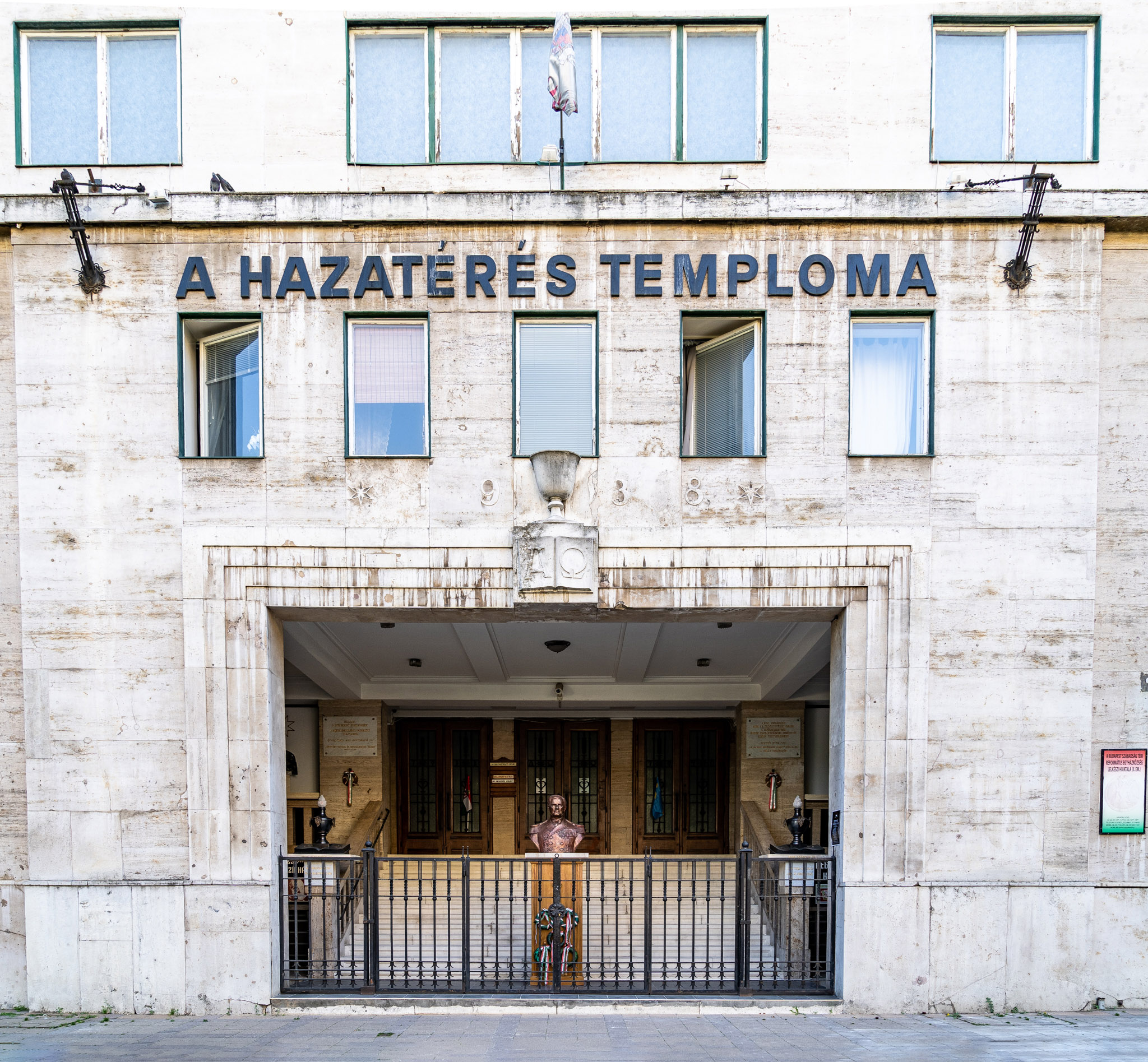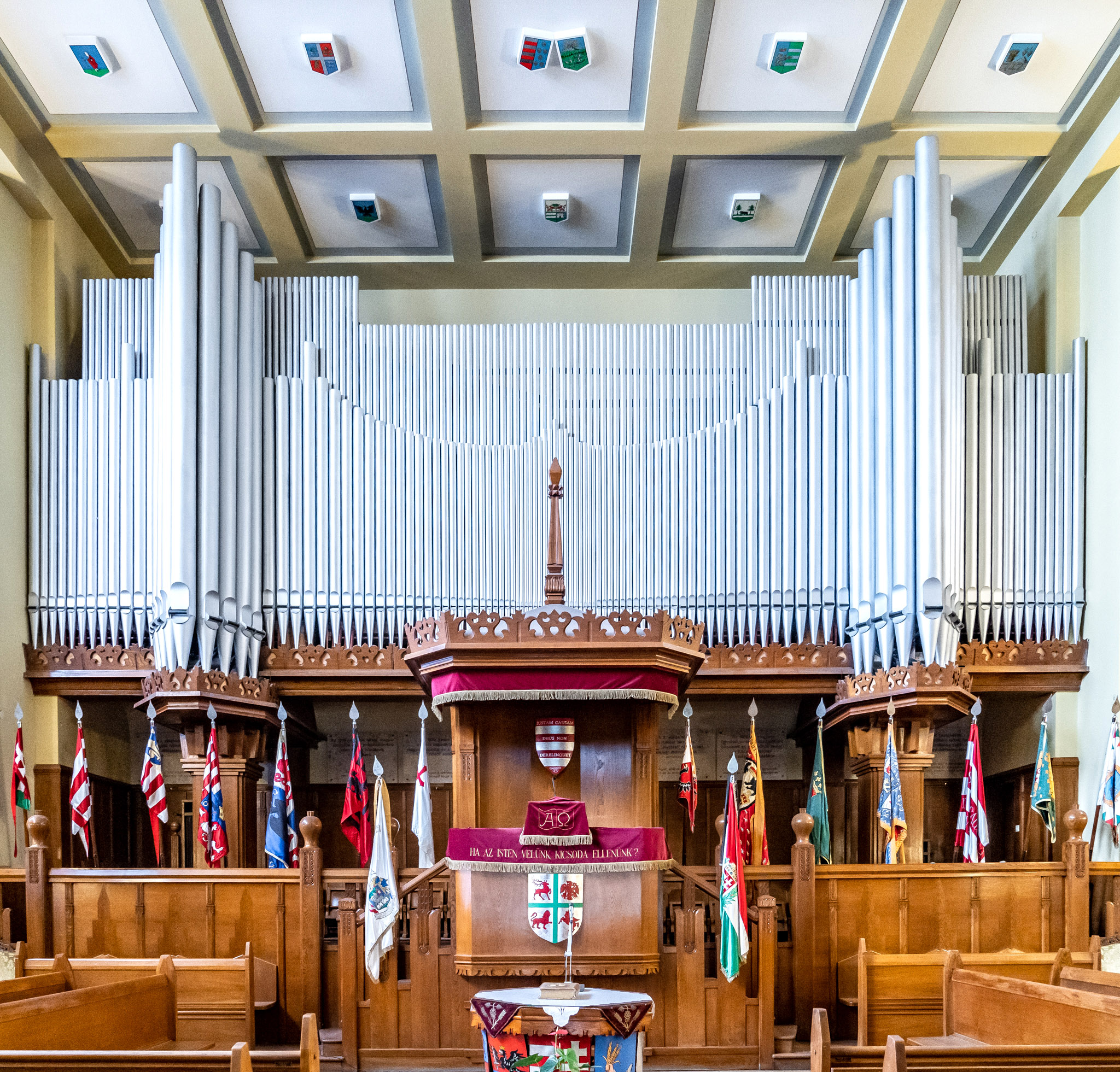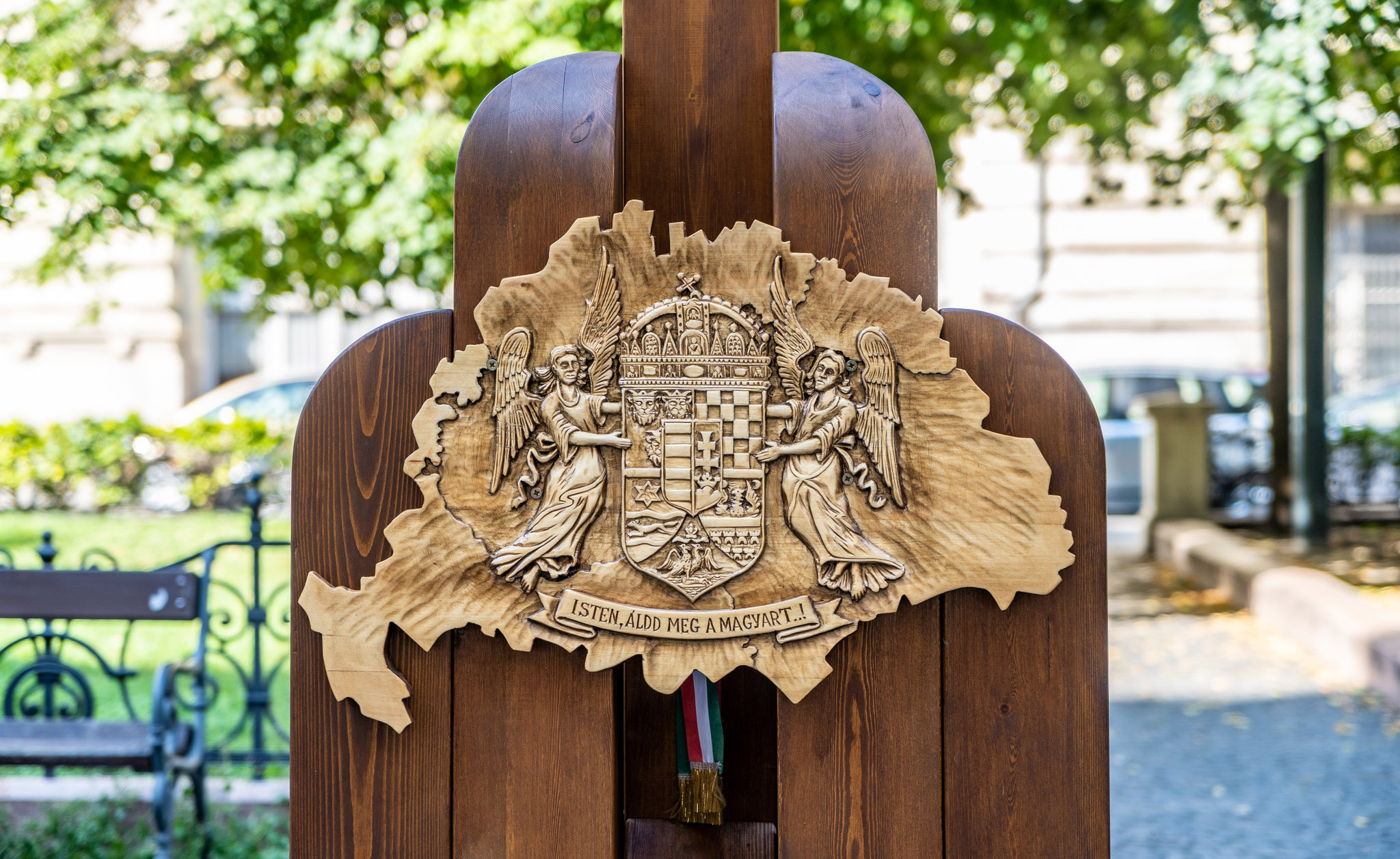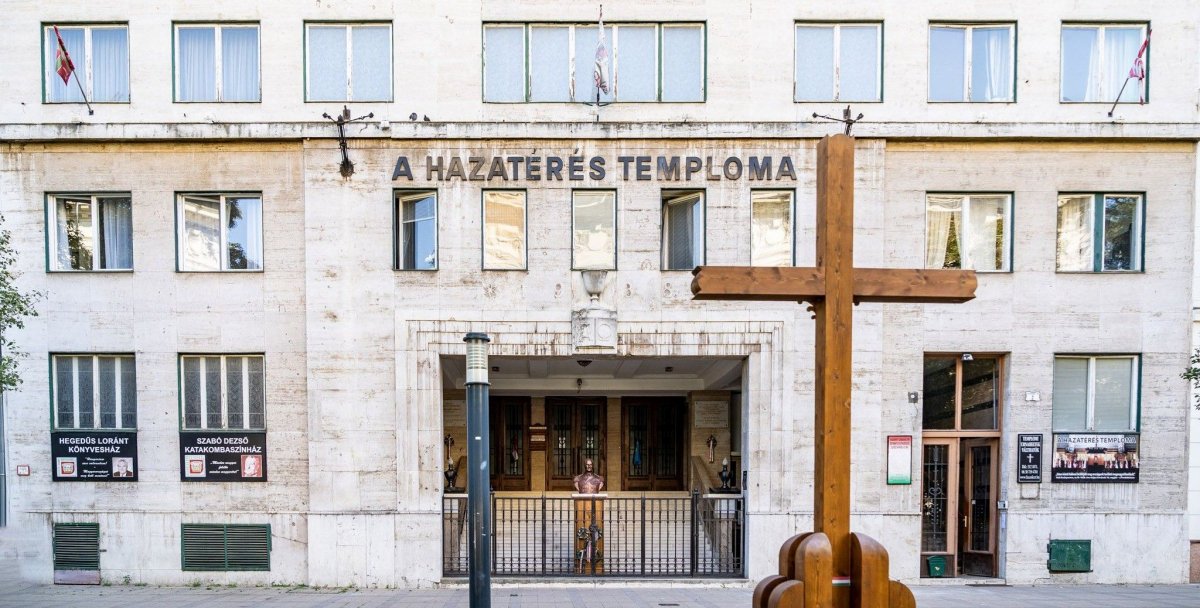By the 1930s, over 5000 thousand refugees of the Reformed conviction lived in Budapest and had nowhere to pray. The capital donated the land, on to which the church was planned as part of a multi-storey residential building. No one even considered that by the time it was completed no only parts of northern Hungary, but parts of Transylvania would also be returned to Hungary. (The I & II Vienna Awards were declared null and void in the Treaty of Paris closing WWII.) The dedication of the church took place on 15 September 1940. The same day that Miklós Horthy, Governor of Hungary entered Kolozsvár (present-day: Cluj Napoca, Romania), which was celebrated in Budapest with a massive fireworks display.
The cornerstone of the building was lain in 1939. The church was to serve as the home of the 5500-strong Reformed Congregation formed mainly of refugees that had come to Hungary from the annexed territories. The congregation had existed since the Treaty of Trianon was signed, but had church and worshipped in nearby German-speaking Reformed and Unitarian churches. In 1938 Budapest City Council donated a plot of land for the Church.
The Reformed Church of Homecoming designed by Géza Dabasi Halász and Sándor Győry in the year of its completion, 1940 (Photo: Tér és Forma, 1940/8)

The entrance to the Church of Homecoming today. The bust of Governor Miklós Horthy was erected on the 75th anniversary of the I Vienna Award and the laying of the foundation stone (Photo: Balázs Both/pestbuda.hu)
The church was built from donations made by the congregation and public. The plans were completed by the architects Géza Dabasi Halász and Sándor Győry. However, as the plot was so small, they had a hard time fitting not only a worship hall, but a prayer room, a congregation hall, and space for cultural events and flats in the small space between two residential buildings.
Cross-section of the building from the west (Photo: Tér és forma, 1940/8)
The result is a simple, low-key modern building that barely resembles a church. Its façade, though elegant, is more that of an office building, or a block of flats. Two or three elements refer to the building's role as a church: the stairs leading to the main entrance with a relief of a chalice and Bible above them, second the tower, which is barely visible from the square, and the third are the whitewashed walls, which reflect the puritan nature of reformed churches.
The simple exterior hides a more ornate interior. A massive organ dominated the worship hall, placed behind the pulpit the instrument is in front of the congregation during worship.

The of the church was placed behind the pulpit (Photo: Balázs Both/pestbuda.hu)
Other elements of the interior draw from elements of Hungarian Calvinist traditions: the pulpit and its roof are decorated with folk wood-carvings, with two seats of Moses either side of it also decorated with carvings. Painted glass windows with the coats of arms of Kassa (Košice, Slovakia), Komárom, Rimaszombat (Rimavská Sobota, Slovakia) and Munkács (Mukachevo, Ukraine), and the coffered ceiling also decorate the interior.
On the 30 August 1940, the II Vienna Award granted Hungary control of the northern parts of Transylvania. In connection with this, the church was dedicated on the day Miklós Horthy entered Kolozsvár, on 15 September 1940. Several hundred members of the congregation attended the ceremony led by Pastor János Victor, following which a general assembly was held chaired by dr. Béla Csilléry. The participants then sent a telegram to the governor and greeted their Transylvanian siblings.
Ceremony on Szabadság Square on 15 September 1940 (photo: Képes Vasárnap, 22 September 1940)
Another large ceremony was also held on Szabadság Square the same day. The national flag on the square, which had traditionally always flown at half-mast in reference to the lost territories was raised to the top of the mast.
The largest fireworks display Budapest had ever seen commemorated the return of Northern Transylvania to Hungary (Photo: Képes Vasárnap, 22 September 1940)
A large fireworks display closed the day on Gellért Hill. The traditional fireworks show of 20 August had been cancelled due to bad weather. Thus, the celebratory rockets were fired off on 15 September. Contemporary press reports claim that the display was the brightest and most colourful show the capital had ever seen.

The map and coat of arms of historical Hungary on a cross erected opposite to the Church of Homecoming (Photo: Balázs Both/pestbuda.hu)
Cover photo: The church of Homecoming today (Photo: Balázs Both/pestbuda.hu)





































Hozzászólások
Log in or register to comment!
Login Registration